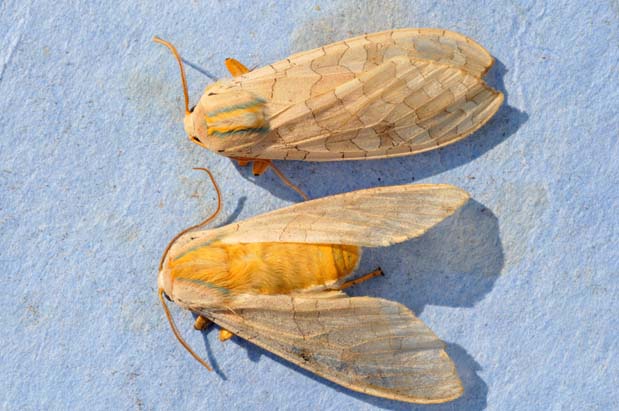

|
|
Tussock Moth adult
(John Obermeyer, Purdue University) |
|
Common Name: Tussock Moth - adult
See also: larva | damage Scientific Name: Lymantriidae: several species Status: pest of forest and shade trees Damaging Stage: caterpillar Biology: Adult appearance varies widely by species. Usually they are 1/2 to 4/5 inch long and are much less conspicuous than are the ornate and colorfully bristled caterpillars. In some species, females are wingless, but males have white, gray, or brown forewings mottled with wavy black or brown marks and gray hindwings. Young caterpillars are black with long body hairs. As they mature, they produce brightly colored tufts of hair. Fully mature larvae are approximately 1 to 1 1/2 inches long with a gray-brown abdomen and a shiny black head. The females lay their eggs in a mass. The eggs hatch in early spring, and the larvae feed and grow for four to six weeks. The pupal stage lasts for about two weeks. The adults emerge, fly, and mate in late spring. There are either one or two generations per year, depending on the species. |
 |
||||||||||||||||
|
|
|||||||||||||||
|
Purdue Extension Entomology, 901 West State Street, West Lafayette, IN 47907 USA, (765) 494-4554 Department of Entomology | College of Agriculture | Extension © Purdue University | An equal access/equal opportunity university | Integrity Statement | Copyright Complaints | Maintained by ENTM IT Trouble with this page? Disability-related accessibility issue? Please contact us at entmwebmaster@purdue.edu so we can help. | ||||||||||||||||
